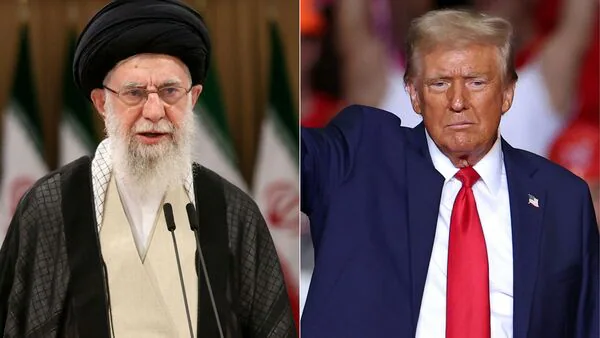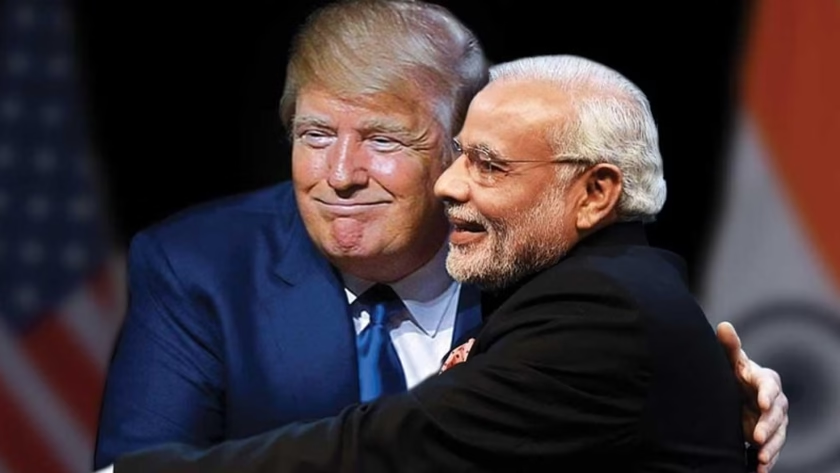New Delhi: On April 10, 2025, Tahawwur Hussain Rana, a Pakistani-born Canadian implicated in the 2008 Mumbai terror attacks, stepped onto Indian soil, ending a 15-year saga of legal battles and diplomatic grit. The attacks, which claimed 166 lives and scarred a nation, were a chilling display of Lashkar-e-Taiba’s (LeT) brutality, orchestrated with chilling precision across Mumbai’s iconic landmarks. Rana, a former Pakistan Army doctor and Chicago-based businessman, wasn’t among the gunmen but allegedly played a pivotal role as a facilitator, enabling the reconnaissance that made the carnage possible. His extradition from the U.S. marks a triumph for India’s relentless pursuit of justice, yet it opens fresh questions about the shadows still shielding the plot’s masterminds.
This deep dive traces the arduous journey to bring Rana to book—from his 2009 arrest in Chicago to the high-stakes extradition fought across U.S. courts. It unpacks his alleged ties to LeT, Pakistan’s ISI, and co-conspirator David Headley, whose testimony exposed a web of terror. The story spans continents, intertwining survivor demands, geopolitical tensions, and the dogged efforts of Indian and U.S. officials. As Rana faces trial in Delhi, the stakes are monumental: Will his interrogation unravel the full truth behind 26/11, or will key culprits remain beyond reach? This account explores the victories, frustrations, and lingering mysteries of a case that continues to haunt India’s conscience.
Background: The 2008 Mumbai Attacks
On November 26, 2008, ten heavily armed terrorists from the Pakistan-based Lashkar-e-Taiba (LeT) launched a 60-hour siege on Mumbai, targeting landmarks like the Taj Mahal Palace Hotel, Chhatrapati Shivaji Terminus (CST), and Chabad House. The attack, orchestrated with military precision, shocked the world and strained India-Pakistan relations. Ajmal Kasab, the only terrorist captured alive, was executed in 2012, but key planners remained at large.
Tahawwur Rana, a Pakistani-born Canadian national, emerged as a critical figure in the conspiracy. A former Pakistan Army doctor, Rana operated an immigration consultancy in Chicago and was a childhood friend of David Coleman Headley (born Daood Gilani), the American-Pakistani terrorist who conducted reconnaissance for the attacks. Indian authorities alleged Rana provided logistical and financial support, using his business as a cover for Headley’s activities.
Rana’s Alleged Role
Rana’s involvement, as outlined by India’s National Investigation Agency (NIA) and U.S. prosecutors, was not as a gunman but as a facilitator:
-
Logistical Support: Rana allegedly allowed Headley to use his immigration firm, First World Immigration Services, as a front to travel to Mumbai under the guise of business trips. This enabled Headley to scout targets between 2006 and 2008.
-
Financial Backing: Evidence, including emails and intercepted calls, suggests Rana knowingly supported Headley’s operations, aware of his LeT connections.
-
Links to Pakistan’s ISI: Indian agencies claim Rana had ties to Pakistan’s Inter-Services Intelligence (ISI), which allegedly backed LeT. In a 2011 U.S. trial, Headley testified that Rana was in contact with ISI operatives, including figures codenamed “Major Iqbal.”
-
Post-Attack Statements: Intercepted conversations revealed Rana praising the slain LeT terrorists, suggesting they deserved Pakistan’s highest military honor, the Nishan-e-Haider, indicating his ideological alignment.
Despite these allegations, Rana’s 2011 U.S. trial had mixed outcomes. A federal jury convicted him for supporting LeT and plotting an attack on a Danish newspaper but acquitted him of direct involvement in the Mumbai attacks, a decision criticized as inconsistent given the evidence.
The Legal Battle for Extradition
Bringing Rana to India was a 15-year ordeal, marked by legal complexities and diplomatic persistence:
-
Initial Arrest (2009): Rana and Headley were arrested in the U.S. in October 2009, initially for plotting against the Danish newspaper Jyllands-Posten. India soon sought Rana’s extradition for the Mumbai attacks.
-
U.S. Conviction and Release (2013-2020): After his 2011 conviction, Rana was sentenced to 14 years in 2013. He was granted compassionate release in June 2020 due to COVID-19 concerns, but India’s prompt extradition request led to his rearrest within a day.
-
Extradition Hearings (2020-2025): Rana fought extradition, citing double jeopardy (arguing he’d already been tried for related crimes) and claiming he’d face torture or execution in India. Indian advocate Dayan Krishnan, alongside U.S. prosecutors, countered that the Indian charges—waging war, murder, conspiracy, and terrorism—were distinct from his U.S. case.
-
May 2023: A California District Court approved extradition.
-
August 2023: The Ninth Circuit Court dismissed Rana’s appeal.
-
August 2024: Another appeal was rejected.
-
January 2025: The U.S. Supreme Court denied Rana’s habeas corpus petition.
-
April 2025: His final emergency plea was dismissed, clearing the way for extradition.
-
Key milestones:
-
Final Transfer (April 9-10, 2025): Rana was flown from Los Angeles to Delhi on a Gulfstream G550, accompanied by NIA officials, NSG commandos, and U.S. Sky Marshals. The operation, with a stopover in Romania, was executed under tight security to avoid interference from Pakistan-based terror groups.
Diplomatic Efforts
The extradition required sustained diplomacy:
-
India-U.S. Cooperation: The 1997 India-U.S. Extradition Treaty was central. India assured the U.S. that Rana would receive a fair trial, face no torture, and be tried only for specified charges. The U.S. Department of Justice, FBI, and State Department collaborated closely with India’s Ministry of External Affairs and Home Affairs.
-
Key Figures: Indian External Affairs Minister S. Jaishankar and Home Minister Amit Shah were vocal advocates. During Prime Minister Narendra Modi’s February 2025 U.S. visit, President Donald Trump publicly endorsed Rana’s extradition, calling him a “very evil man.”
-
Political Context: Former Home Minister P. Chidambaram noted that efforts began under the UPA government in 2009, with momentum building over time. The Modi government’s aggressive counter-terrorism stance, including high-level engagements with the U.S., was credited for sealing the deal.
Arrival and Ongoing Investigation
On April 10, 2025, Rana landed in Delhi and was arrested by the NIA. A special court granted 18 days of custody for interrogation, led by NIA Director General Sadanand Date, a 26/11 survivor injured during the attacks. The NIA aims to:
-
Uncover details of the Mumbai plot, including planning and funding.
-
Probe Rana’s ISI connections and potential state actor involvement.
-
Investigate whether similar attacks were planned for other Indian cities, as suggested in court.
Rana faces charges under the Indian Penal Code, Unlawful Activities (Prevention) Act, and SAARC Convention on Suppression of Terrorism, with possible penalties including death. Senior advocate Dayan Krishnan, instrumental in the extradition, leads the prosecution, supported by Narender Mann.
Challenges and Broader Implications
Despite this breakthrough, challenges remain:
-
Limited Closure: Rana’s trial may not fully unravel the conspiracy. Key figures like LeT founder Hafiz Saeed and planner Zaki-ur-Rehman Lakhvi remain in Pakistan, beyond India’s reach. Headley, serving a 35-year U.S. sentence, is unlikely to be extradited due to his plea deal and alleged ties to U.S. intelligence.
-
Pakistan’s Role: Pakistan distanced itself from Rana, emphasizing his Canadian citizenship, but India insists on state actor involvement. Rana’s interrogation could yield critical evidence, though diplomatic fallout may complicate matters.
-
Survivor Demands: Victims like Devika Rotawan, shot at age nine, and others demand swift justice, wary of delays like those in Kasab’s case. Some call for deeper probes to reach the “masterminds.”
The extradition signals robust India-U.S. counter-terrorism cooperation, praised by figures like U.S. Secretary of State Marco Rubio and former Israeli diplomat Mark Sofer. It underscores that justice, though delayed, is relentless, sending a message to terror networks globally.
Critical Perspective
The narrative around Rana’s extradition, while a victory, warrants scrutiny. The U.S.’s initial acquittal of Rana on Mumbai charges raises questions about judicial inconsistencies or geopolitical considerations. Headley’s lenient treatment—avoiding extradition despite his central role—hints at possible U.S. protection of assets with intelligence value. Pakistan’s denial of ISI involvement, despite evidence, reflects a broader pattern of deflecting accountability. India must balance swift justice with thorough investigation to avoid political optics overshadowing truth.
In sum, Rana’s extradition is a hard-won step, but the road to full accountability for 26/11 remains long, with justice for victims hanging in the balance





